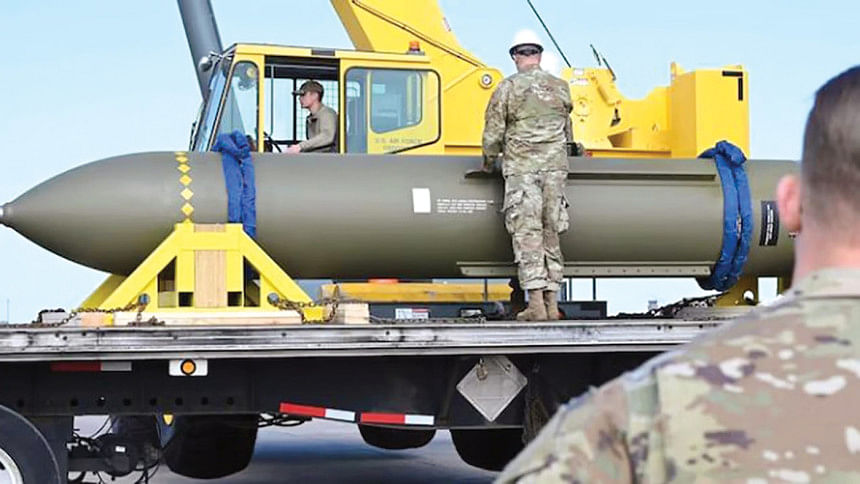Use of US bunker-buster bomb looms over Iran conflict

A powerful American bunker-busting bomb is the only weapon capable of destroying Iran's deeply buried nuclear facilities, making it President Donald Trump's weapon of choice if he chooses to militarily back Israel.
The GBU-57, a 30,000-pound (13,607 kg) warhead capable of penetrating 200 feet (61 meters) underground before exploding, is missing from Israel's arsenal despite its stated goal of preventing Iran from building a nuclear bomb.
WHY THIS BOMB?
In less than a week, the Israeli army has taken out Iranian military commanders and damaged numerous surface installations, raising more questions than answers.
"The regime's missile stockpiles, launchers, military bases, production facilities, nuclear scientists, military command and control has taken a very severe beating," said Behnam Ben Taleblu, director of the Iran program at the Washington-based think tank Foundation for Defense of Democracies (FDD), a conservative-leaning group.
"But there are still outsized questions as to how efficacious of a strike Israel had against the beating hearts of Iran's nuclear program," Taleblu said.
The International Atomic Energy Agency (IAEA) has reported no damage at Fordo, a uranium enrichment plant south of Tehran. Unlike the Natanz and Isfahan sites in central Iran, Fordo is buried deep underground, beyond the reach of Israeli bombs. "All eyes will be on Fordo, which is buried under about 300 feet of rock in central Iran," Taleblu said.
Former US Army lieutenant general and Rand Corporation defense researcher Mark Schwartz insists that "only the United States has the conventional capacity" to destroy such a site. And by "conventional capacity," he means the non-nuclear GBU-57 bomb.
WHAT ARE ITS CAPABILITIES?
The US military says the GBU-57 -- also named Massive Ordnance Penetrator -- "is designed to penetrate up to 200 feet underground before exploding," navigating through rock and concrete.
This differs from missiles or bombs that typically detonate their payload near or upon impact.
"To defeat these deeply buried targets, these weapons need to be designed with rather thick casings of steel, hardened steel, to sort of punch through these layers of rock," said Masao Dahlgren, a fellow working on missile defense for the Center for Strategic and International Studies (CSIS), a Washington-based research center.

 For all latest news, follow The Daily Star's Google News channel.
For all latest news, follow The Daily Star's Google News channel. 



Comments